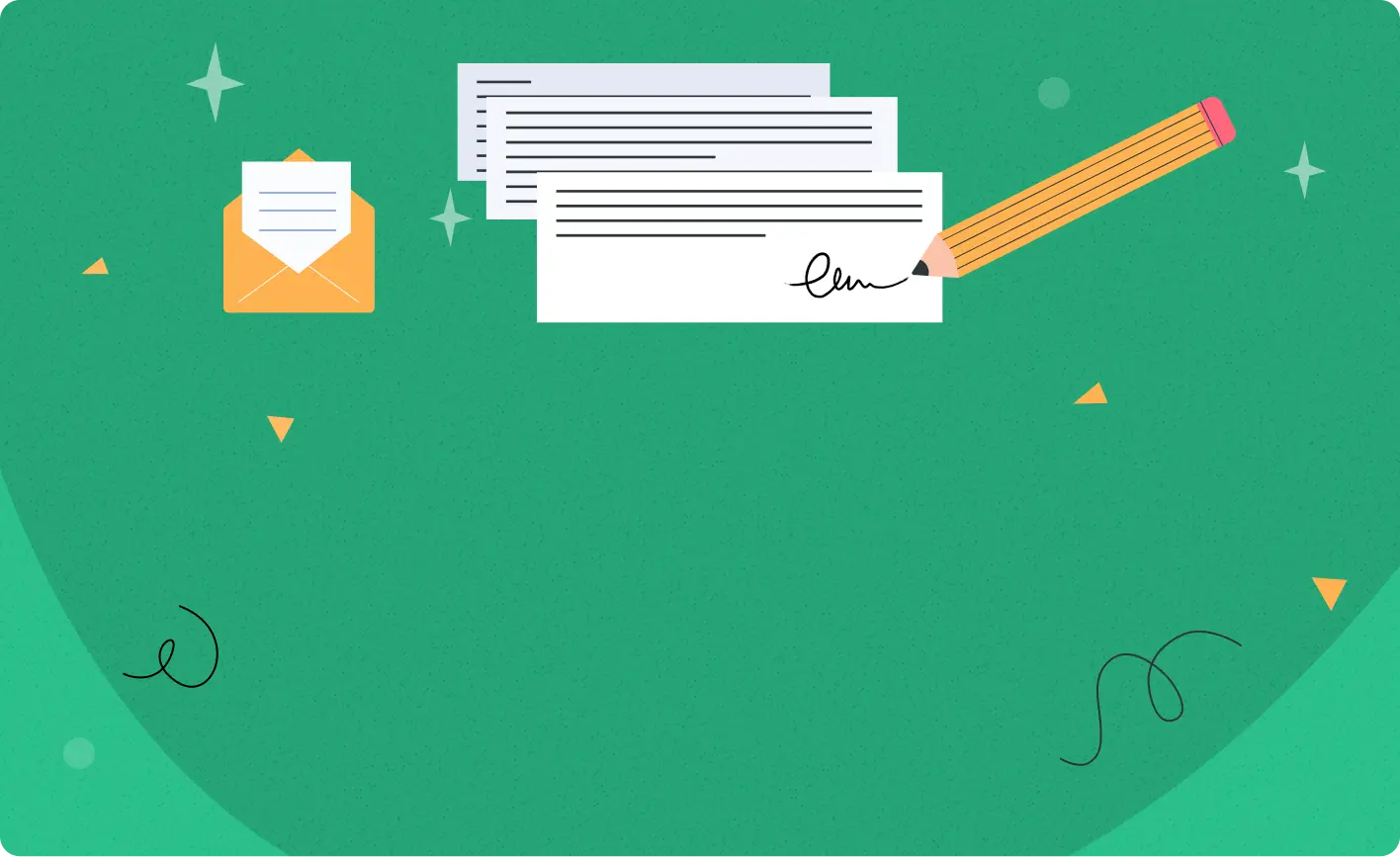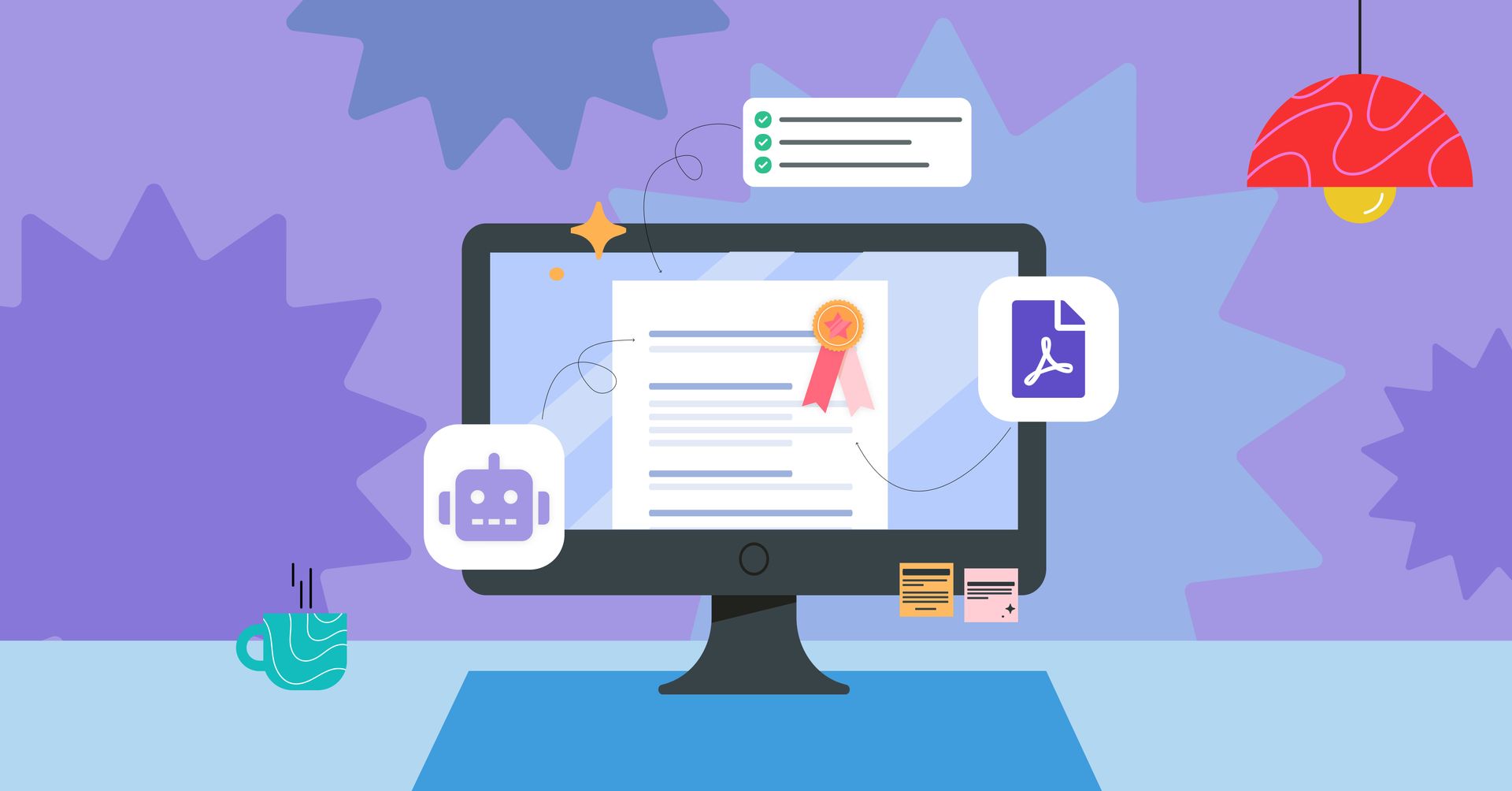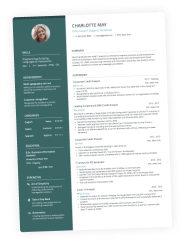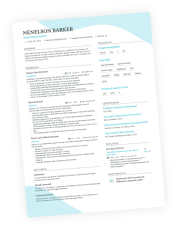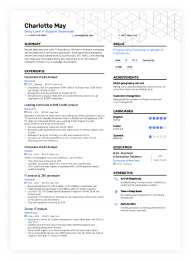Cover letters still matter in 2026—you can trust our expertise. But how should a cover letter be formatted? As Certified Professional Résumé Writers, we spend a lot of time reviewing real-world application documents and know through experience what works—and what doesn’t.
That’s why we decided to gather our professional cover letter writing tips. Real, actionable tips that will help you figure out your strategy and be prepared at every step of the process—from what your document looks like to what it contains.
Let’s begin.
Key takeaways
- Start with intent. Define why you’re applying and what makes you a fit—clarity of purpose is the backbone of a strong cover letter.
- Design for accessibility. Use high-contrast text, clean layouts, and mobile-friendly formatting so your letter is easy to read everywhere.
- Tell a story. Use frameworks like STAR to highlight your achievements in a way that’s memorable and results-driven.
- Match the tone. Adjust your voice to reflect the company’s culture—formal for corporate, bold for startups, collaborative for remote-first.
- Show cultural alignment. Highlight values, soft skills, and behaviors that prove you’ll thrive in the company’s environment.
- Adapt to your career stage. Students, career changers, mid-level professionals, and executives each need a different emphasis in their letters. Keep track of each tailored version with the Enhancv Job Application Tracker.
- Use modern tools wisely. AI and templates can help, but personalization and authenticity are what make a cover letter stand out.
- Iterate and refine. Treat your cover letter as a living document—get feedback, adapt to responses, and stay up to date with hiring trends.
- Polish before sending. Run grammar checks, read aloud for flow, and get a peer review to eliminate distracting errors.
- Expand your presence. Include links to LinkedIn, portfolios, GitHub, or blogs to give recruiters a fuller picture of your professional brand.
Tip 1. Be clear on intent before you write
When writing your cover letter, the clarity of purpose is key. What do you want to convey to the employer? Do you want to bring your leadership skills front and center? Or show that you’re eager to learn? Offer a solution for the company’s current needs? A proper cover letter is a statement of intent.
In other words, recruiters should be able to answer, after reading your first few lines, “Why is this person applying here, and what makes them a fit?” Without that clarity, even the best cover letter format won’t help you stand out.
For example, if you’re applying to a startup, your intent might be to show creativity and flexibility. If you’re targeting a corporate role, your goal might be to highlight reliability and measurable results. And if you’re changing careers, your intent should make clear how your past experience translates into value in a new field.
How to define your intent
| Ask yourself this question… | Use it to define your intent by… |
|---|---|
| What do I want the employer to remember about me? | Summarize your core strength in one line (e.g., “I deliver complex projects on time.”) |
| What problem is this company trying to solve by hiring? | Phrase how you’re the solution (e.g., “I can help them expand into new markets.”) |
| Which of my skills or experiences best prove I can do that? | Choose one or two concrete examples to highlight later in your cover letter. |
Tip 2. Design for accessibility and readability
A cover letter should be easily read by others. Accessibility ensures your letter works for recruiters skimming dozens of applications or hiring managers reviewing on mobile.
Here’s how to make your cover letter accessible:
- Check color contrast. Light gray text on white may look stylish, but it’s hard to read. Stick with high-contrast colors for clarity.
- Preview across devices. Recruiters might read your letter on a desktop, laptop, or phone. Make sure it looks clean and professional everywhere.
- Save as PDF. This preserves your formatting across operating systems and prevents layout issues.
- Avoid formatting traps. Decorative fonts, text boxes, or images can distract readers. Keep it simple.
- Design inclusively. Use dyslexia-friendly fonts, short paragraphs, and clear headings so your letter is easy to skim for everyone.
Tip 3. Leverage storytelling techniques
Many people say, “I dread cover letters because I’m not a good writer.” But just like most things, writing is much more discipline than talent. That, and a strategy.
One of the most effective ways to structure your body paragraphs is to use a storytelling framework. Two easy ones to remember are:
- STAR (Situation, Task, Action, Result): briefly set the scene, explain your role, describe what you did, and share the outcome.
For example:
“When our retention dropped by 12% (Situation), I was tasked with improving onboarding (Task). I redesigned the process and introduced a buddy system (Action), which boosted retention by 18% in six months (Result).”
Tip 4. Match the company’s tone and culture
Tailoring your cover letter isn’t just about mentioning experiences and achievements that fit your desired role, it’s also about matching your prospective company’s tone. If you do this, the employer will instinctively feel like you already belong in the culture of the company.
Let’s look at some scenarios:
- A formal corporate role calls for a structured, professional voice—precise language and measurable results.
- A startup or creative company invites more personality, boldness, and even a touch of humor.
- Remote-first or global teams value adaptability, collaboration across time zones, and independence.
Tip 5. Show cultural fit
We’ve already established the importance of how you communicate. But what you communicate—in terms of values, behaviors, alignment—is just as vital.
Employers want someone who feels at home in their environment.
Here’s how to show cultural fit through your cover letter:
- Mention the company’s mission, values, or a recent initiative you admire. You can usually find those on the company’s website, their LinkedIn profile, or social media. You could also try this search: [Website Name] + interview/podcast—to check out some of their media presence.
- Share soft skills like teamwork, leadership, or adaptability, and tie them to real examples.
- Demonstrate not just that you can do the job—but that you’ll thrive with their team.
The importance of soft skills
Did you know that 89% of employers now value soft skills more than they did five years ago, indicating a significant shift towards interpersonal abilities? Cultural alignment has become just as important as technical qualifications.
Tip 6. Adapt to your career stage
A standard cover letter format works for everyone, but what you emphasize depends on where you are in your career.
Here’s how it breaks down:
- Students / early career: You may not have years of work experience yet, and that’s okay. Focus on your potential, education, and willingness to learn. Highlight coursework, internships, or projects that show initiative.
- Mid-level professionals: If you’re ready to step up, emphasize readiness for more responsibility—managing projects, mentoring teammates, or driving measurable impact. If you’re making a lateral move, focus on growth: why this role or company is the right next step, and how you’ll bring fresh energy and proven expertise.
- Career changers: Frame your transferable skills and be explicit about your motivation for switching fields. Show how your past experiences bring fresh perspective to the new role. Acknowledge the change directly, but pivot quickly to what value you’ll add in this new context.
- Executives: At this stage, it’s less about proving you can do the job and more about showing vision, leadership, and measurable impact. Highlight strategic achievements, team leadership, and results at scale.
- Our cover letter templates can be adjusted to any career path.
Tip 7. Use modern tools wisely
In 2026, candidates have more help than ever—AI writing assistants, resume and cover letter builders, and ATS screening tools. But here’s the catch: the best cover letter strategies use these tools as support, not substitutes.
Our Cover Letter Generator can help you create a cover letter within minutes—it allows you to feed it the job description, choose the tone, and wrap everything up with a professional design.
Drop your resume here or choose a file.
PDF & DOCX only. Max 2MB file size.
AI tools: draft smarter, personalize harder
AI can help you brainstorm phrasing, generate variations, or match your content to a job description. Tools like ChatGPT can even suggest achievements to highlight, based on your role. But recruiters can spot a fully AI-written cover letter instantly—it sounds flat, generic, and soulless. The best approach is to use AI for structure or wording, then layer in your own voice, personality, and real-world details.
Video or multimedia cover letters are niche but impactful in creative and tech industries. They let you show communication skills and personality in ways text can’t. Still, don’t use them where formality is expected (finance, law, government). Always read the cultural cues before you experiment.
Tip 8. Keep learning and iterating
Your first draft won’t be your best draft—and that’s perfectly normal. Great cover letters are built through refinement. Think of yours as a living document that grows with your career.
Here’s how to keep improving:
- Get feedback. A friend, mentor, or even a professional coach can point out blind spots you might miss. Use the Share function in the Enhancv Builder to instantly get comments from people you trust.
- Test and adapt. Notice which versions of your cover letter get responses, and refine from there. But don’t just recycle one letter for every application. Tailor it to fit each job posting.
- Stay updated. Hiring trends evolve—AI and remote-first work have already changed what employers expect. Keep your edge by reading industry websites (like the Enhancv Blog ✨), taking short online courses, and following recruiting professionals or career coaches on LinkedIn.
- Invest in learning. From online writing workshops to webinars about modern hiring practices, every bit of knowledge helps you polish your approach and stay ahead of the curve.
Tip 9. Proofread and polish
Even the most persuasive stories can fall flat if your cover letter is riddled with typos or awkward phrasing. Make sure your cover letter is polished, professional, and free of distractions that pull focus away from your achievements.
Here’s how to get it there:
- Run a grammar and spell check. Tools like Grammarly can catch small mistakes, but don’t rely on them alone. Our ATS Checker provides 16 checks to ensure your application is spotless.
- Ask for a peer review. A friend, mentor, or colleague can spot gaps you may have missed and give feedback on clarity and tone.
- Read it aloud. This simple trick helps you catch clunky sentences, repeated words, or overly long phrasing. If it doesn’t sound natural, rewrite it.
Tip 10. Link your online presence
A cover letter doesn’t have to do all the heavy lifting on its own. Today, employers expect you to have an online footprint—and your letter is a great place to point them toward it.
Beyond the standard LinkedIn URL, consider including:
- A portfolio site if you’re a designer, writer, or creative.
- Your GitHub profile if you’re in software engineering.
- A personal blog or Substack if you share industry insights.
- Even a professional Medium page if it shows thought leadership.
These links transform your cover letter from a static one-pager into a doorway to your broader professional brand. Just make sure anything you link to is polished, up-to-date, and relevant.
Final thoughts
Writing a good cover letter doesn’t rely on a single trick. It’s a combination: a polished format, a clear message, stories that show results, and a voice that fits the company you want to join.
In 2026, hiring may be shaped by AI, remote-first teams, and digital tools—but what wins every time is a cover letter that feels genuine. That part hasn’t changed.
